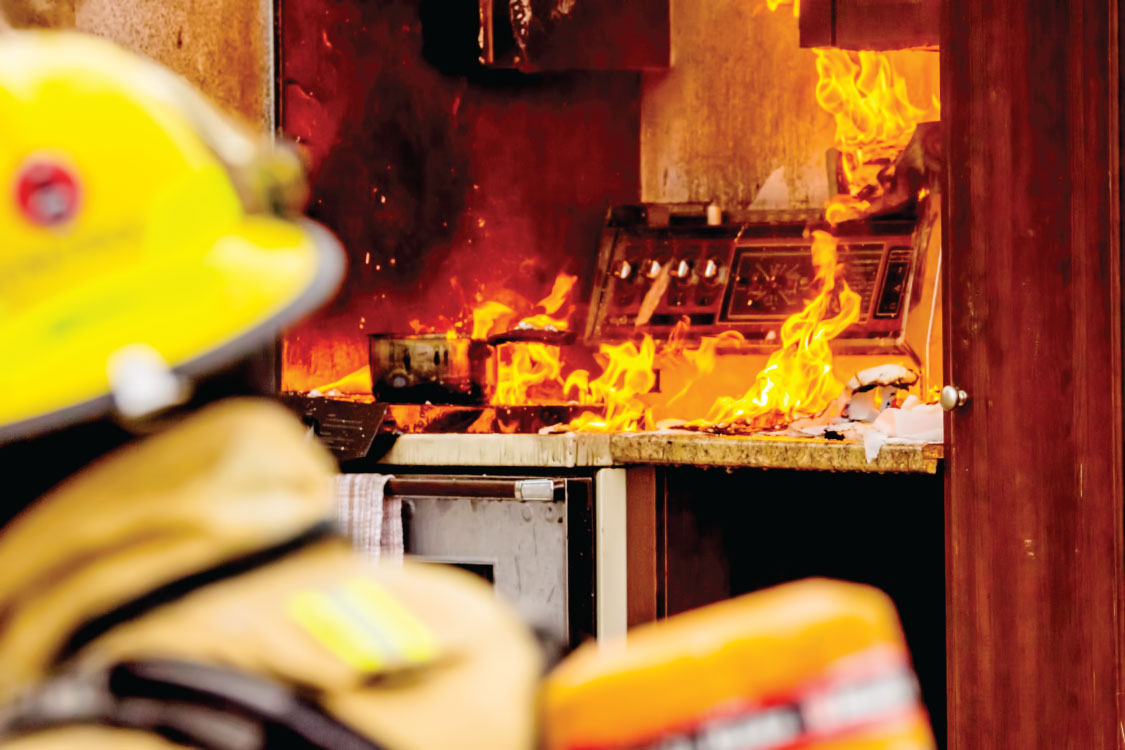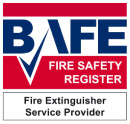26 March 2021
How to Identify and Extinguish Class F Fires
Fire is categorised depending on the fuel source, and being able to differentiate between the seven different classes of fire is key to fire safety. This knowledge of fire classes is crucial not only in preparing for and preventing risks, but also in choosing the right fire extinguisher to combat specific fires. This is Fire & Security Group’s guide to identifying and extinguishing Class F fires.

What is a Class F Fire?
A Class F fire is a fire involving cooking fats or oils – it’s important to note that fires involving cooking fats and oils are in a separate class to fires involving flammable liquids (Class B). These fires, of course, are common in kitchens and catering environments. They can range from chip pan fires to blazes involving vats of vegetable oil. Oils and fats have a higher ‘flash point’ than other substances – they need to reach around 340°c to ignite.
How to Identify Class F Fires
A Class F fire will burn orange. Some fires can have different colour flames depending on what is burning, but with cooking oil and grease fires, the oil and grease will simply start smoking and then ignite. These fires often start when people leave pans of oil or grease on the hob unattended.
How to Extinguish Class F Fires
Class F fires require a wet chemical fire extinguisher. This is the only suitable extinguisher for Class F fires – you should not, under any circumstances, use water to combat a Class F fire. If the fire is in the kitchen, your instinct may be to take the burning pan and put it under the tap – this will drastically worsen the situation and could result in serious burns. When deployed, the wet chemical extinguisher uses potassium salts to cool the fire and remove the oxygen – these extinguishers were developed specifically to combat Class F fires.
Another method of dousing a Class F fire is to smother it with one or two damp tea towels. This can work for small chip pan fires. Wet the towel, open it out and lay it over the top of the fire. This will cut off the oxygen supply and suffocate it – double up with the tea towels for increased effect.
How to Prevent Class F fires
Firstly, you should never leave a pan unattended whilst you are using it – if you need to leave a room when using the hob, take the pan off the heat and turn the heat off before doing so. Also, ensure your smoke alarms are fully functioning at all times – the warning they provide can be invaluable.
Owners or managers of commercial premises have a legal responsibility to keep everyone within the building safe from fire, and the best way to ensure fire safety risks are mitigated is through a thorough fire risk assessment. By assessing each area of your property, fire safety weaknesses can be identified and fixed. You should also ensure your staff are fully trained in fire safety – from the dos and don’ts of working around flammable materials to the correct usage of fire extinguishers, safety equipment and evacuation procedures.
Fire & Security Group are expert providers of fire extinguishers and safety equipment, fire safety training and fire risk assessments, serving the whole of the UK. If you’d like to know more about our services, contact us today and we’ll be happy to help.

